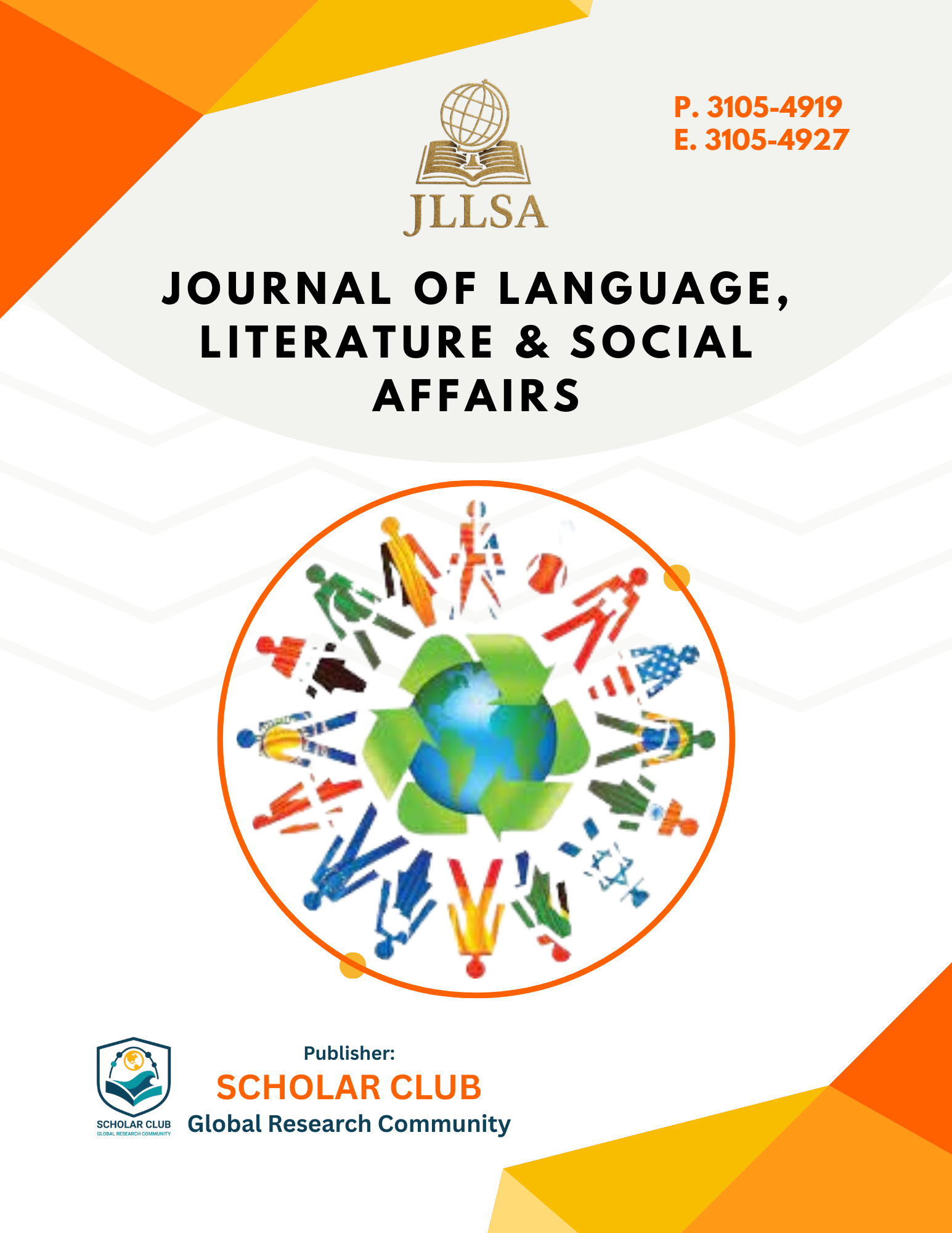Everyday Symbols and the Construction of Meaning: A Symbolic Interactionist Analysis of Desire and Disillusionment in ‘Araby’
Keywords:
symbolic interactionist, collapse, perception, innocence, underpinned, confronting, commercialAbstract
James Joyce’s short story, Araby, is a symbolic interactionist study of how meaning is symbolically constructed to generate psychologically disillusioned meaning. The research examines how a city, a 'bazaar,' a 'sister,' even an everyday object or an environment and how they become emotionally charged symbols determining the plot's protagonists internal reality the method used for this research is qualitative research . The aim of this qualitative study is to explore how the social and cultural factors, such as religious ideology, colonial imagination and romantic idealism, influence the protagonist’ perception and his self. Using textual analysis and secondary sources, the study shows that the collapse of the protagonist’s idealized world that is based on cultural symbols which are shared by the people of the bazaar is underpinned by confronting the mundane and commercial reality of the bazaar. It is a symbolic break down that prompts a great emotional awakening and loss of innocence. It appears that Araby is also a tale telling of the meaninglessness of social symbols. This research makes a contribution to the study of literary and cultural studies by providing new dimensions of the emotional and psychological as related to symbolic interaction in modernist literature.
Downloads
Published
How to Cite
Issue
Section
License
Copyright (c) 2025 Safi Ullah, Gul Aizaz

This work is licensed under a Creative Commons Attribution 4.0 International License.







